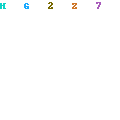10. Pontiac Aztek
2001-2005
The Aztek was criticized for the duration of its life for its ghastly styling. Design is subjective, so what do you think of the Aztek shown here? Were the critics wrong? Yeah, we didn't think so.
9. Daewoo Anything
1999-2002
We had just tested a Suzuki Esteem and marveled at how competent even the cheapest little econoboxes had become when a leather-lined Leganza midsize sedan showed up — the best Daewoo had to offer. We mused over which would kill us first: the toxic gases from the cheap interior or the recalcitrant transmission and inconsistent acceleration. Three days into the loan, the first Daewoo crash tests in U.S. history came out, and we called Daewoo and told them to come pick up the car. We'd never done that before, and we haven't since.
8. Isuzu VehiCROSS
1999-2002
The outrageous Isuzu VehiCROSS two-door SUV, whose extreme styling drew varied reactions, lasted from 1999 to 2001, and even that's surprising. The fanglike grille uprights made it look like it would eat you, which was scary mainly because inside the VehiCROSS was a place no one wanted to be. Headroom was minimal, and the low roof blocked even shorter drivers' view. If the noisy cabin didn't get to you, the punishing ride would. Isuzu deserved credit for taking a chance then on a design likely to find more admirers now, and it deserved scorn for a 2001 sticker price that would be just as preposterous in the current market. The VehiCROSS cost $30,350 by the time it fired up its interplanetary drive and went back where it belonged.
7. Jaguar X-Type
2002-2008

Jaguar X-Type
In the early 2000s, the class of entry-level luxury cars was growing. Most were sporty and started at $30,000 or less. Wanting in, Jaguar came out with the X-Type. From the get-go, critics warned that a cheap Jag would be bad for the brand and that Ford — which bought the company in 1989 — would probably cut corners and sacrifice quality. That was before they saw the product. Sharing its front-drive platform with a European Ford Mondeo, the X-Type was a too-small, not-so-sporty sedan with all-wheel drive that was hamstrung by some of the forewarned quality issues. The trap was clearly visible from miles away, and Ford walked right into it. A 2002 Jaguar X-Type can be had for up to $8,500. A 2002 Honda Civic goes for up to $9,275.
6. Pontiac Sunfire
1995-2005
The Sunfire managed the rare feat of having a worse interior than its GM twin, the Chevy Cavalier. Cheap interior plastics run amok, a coarse four-cylinder engine and horrendous crash-test ratings sealed its fate. On the flip side, the Sunburn was probably responsible for untold thousands of rental-car upgrades: "Honey, remember Fort Lauderdale last summer? Trust me, we want the Grand Am."
5. Cadillac Catera
1997-2001
To think that Germany's Opel is now the source of many of GM's strongest new models...
In the late '90s, the Opel Omega begat a Cadillac that was sporty in theory but soft and underpowered in practice, rear-wheel-drive in design but front-wheel-drive in feel. And that's just the car. Cadillac didn't help its case with advertising that included the tagline "The Caddy That Zigs," supermodel Cindy Crawford, an animated duck, and the suggestion to "lease a Catera" with the response, "Who's Lisa Catera?" The geniuses responsible for the Catera should have been exiled, but we suspect they went on to develop something called the Pontiac Aztek. Upgrades and deep discounts in 2001 couldn't save the Catera; it went to the duck blind in the sky in 2002.
4. Toyota Echo
2000-2005
The Echo subcompact's high seating position and center-mounted instrument panel were two well-intentioned features that were summarily rejected by consumers (though they would find their proponents in later years and other models). Call the Echo ahead of its time if you must; mainly it just wasn't a very good car. In taking over for the Tercel — a boring but popular choice against offerings from Suzuki, Geo and pre- renaissance Kia and Hyundai — the Echo proved that sometimes bland is better than bold. The problem wasn't that the youth-targeted Echo appealed more to older buyers than to younger ones, it was that there weren't enough of either.
3. Jeep Compass
2007-present
We could have easily chosen the Dodge Caliber for this list — a compact hatchback with unremarkable gas mileage, refinement and crash-test scores — but the hapless Compass edged it out. Why? Besides the fact that you shouldn't spread lackluster product around to more than one division (the Compass is related to the Caliber), it doesn't belong in the Jeep lineup, a brand known and respected for its off-road ability. The Compass is a soft-roading poseur, and not a good one at that.
2. Chrysler Sebring
1995-present
The previous-generation Sebring wasn't a bad car in its day, but Chrysler dropped the ball with the redesigned 2007 model. With a weak base powertrain, uncomfortable front seats, poor interior quality and haphazard styling, it never had a chance in the highly competitive midsize-sedan segment.
1. Smart ForTwo
2008-present

2009 smart fortwo
We don't have a problem with small cars in general (we're big fans of the Mini Cooper), just with ones that don't deliver on the benefits of going small. The pint-sized ForTwo sacrifices a lot of passenger space for a relatively unimpressive 41 mpg on the highway, has an SUV-like propensity to roll over, and is equipped with an aggravating sequential manual transmission. Sure, the ForTwo looks cute, but after you drive it you won't be smiling anymore.
Sources:








